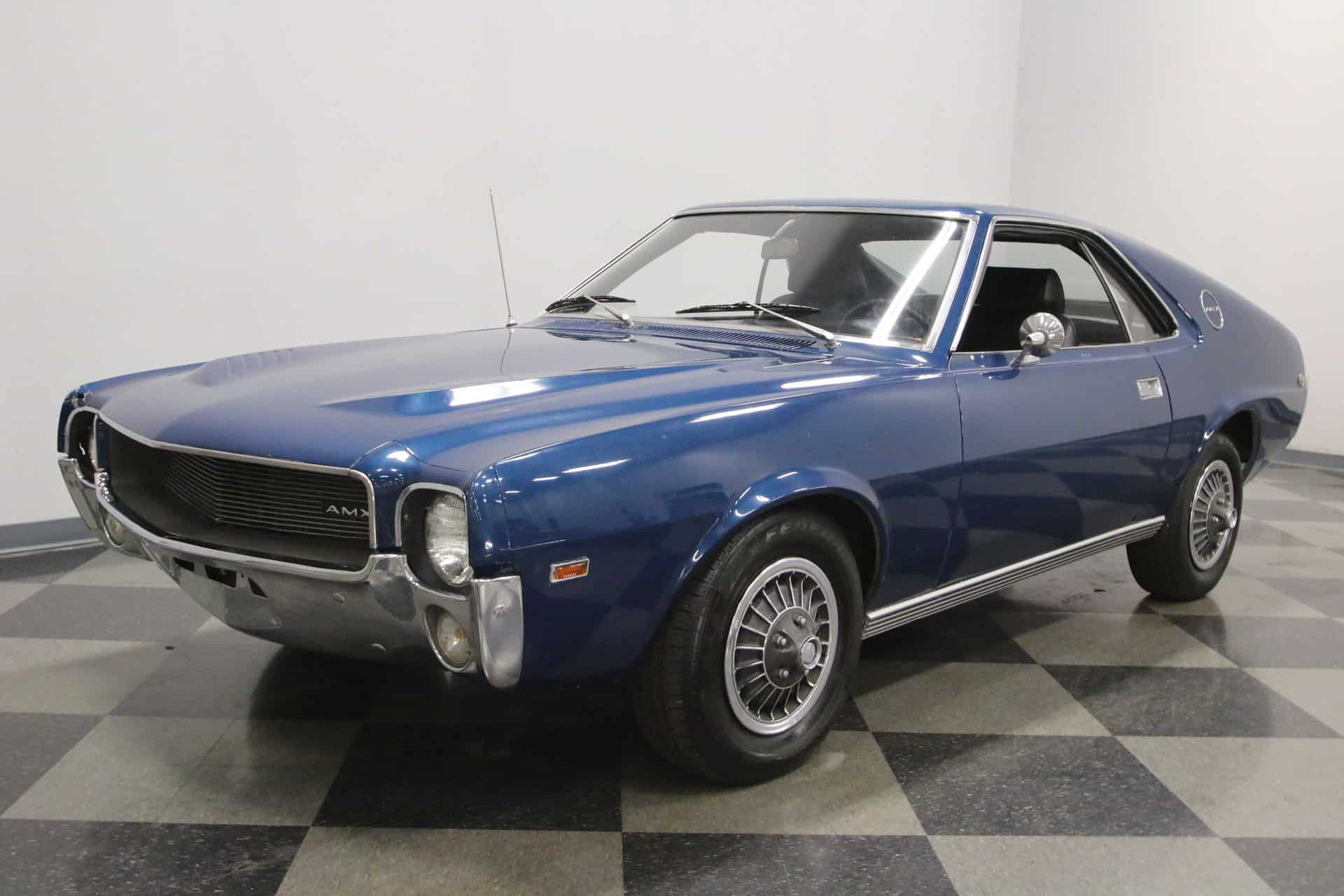
- Sales were up for 1968. AMC sold almost 8,300 AMX’s in 1969 versus 6,700 in 1968.
- The addition of the “Big Bad Colors” in 1969 created some interesting color combination’s including Neon Blue, Orange and Green. These eye catching paint schemes undoubtedly added to sales.
- The Super Stock “SS” AMX
The best known special editions were AMXs modified for AMC by Hurst to meet NHRA Super Stock class drag racing regulations. This was AMC’s offering to the muscle car horsepower wars of the era. The infamous “69 AMX SS” — perhaps the best (race setup) — Detroit ever offered in a production vehicle. Fifty-two AMXs with 390s and 4-speed transmissions with virtually no change to the suspension, received special equipment including Edelbrock cross-ram intakes, dual-quad Holleys, and 12.3:1 Crane modified heads. They were drastically under-rated at 340 “official” horsepower. The first out-of-the-box AMX’s were running 11 second et’s at over 120 mph. These AMXs were “turn-key” race cars. Later that year with a little tweaking and backing by AMC, these cars dipped into the 10 second range. Its best recorded quarter-mile was 10.73 seconds at 128 mph. Shirley Shahan’s “Drag-On-Lady” was most famous of these cars.
Muscle Car Specifications
The 1969 AMX was little changed from the 1968 AMX. There was a new 140 mph speedometer and a tachometer with a larger face. Later in the year, AMC modified the dash panel. Other than that, the only differences were cosmetic. Leather upholstery became an option and a passenger grab handle was added.
Different Models
There were three versions of the 1969 AMX: the standard AMX, the “Big Bad” AMX and the AMX SS. The standard AMX was available with three engine options: a 225 horse power (hp), 290 cubic inch (ci), a 280 hp 343 ci and a 315 hp, 390 ci engines. The buyer got a 4 speed manual transmission standard and a three speed automatic was optional. For the enthusiasts, the “Go Pack” included a 343 ci engine or a 390 ci engine, dual exhausts, power front disk brakes, E-70 wide profile tires on six inch rims, a Twin-Grip differential, a handling package and over the top twin racing stripes. The “Go Package” was available on both the standard AMX and the “Big bad” models. The “Big Bad” AMX was basically a fancy paint job. The buyer had his choice of a wild version of blue, green or orange on the exterior of the car. Additionally, the bumpers were painted instead of chromed. The look was appealing by today’s standards but it may have been a little ahead of its time. The package only cost $34 extra but relatively few people went for it. Less than 10% of buys choose the bright colors.
AMC also made an all-out assault on quarter-mile performance with the Super Stock AMX. At $5994, it cost $1900 more than a fully loaded regular 1969 AMX, the SS/AMX ran with the 390 treated to twin Holley carburetors, 12.3:1 compression heads, a set of Doug’s headers and exhaust system, plus a host of other modifications undertaken by Hurst. It was rather ridiculously rated at 340 horsepower by AMC, the National Hot Rod Association ultimately rated the SS/AMX at 420 horsepower and shuffled it among various classes: SS/G, SS/D, and SS/C. It could be ordered in all-white paint, or in the vertical red, white, and blue that banded the bodies of many AMC competition cars of the day. Only 52 were produced and most of those spent their entire life on the drag strip. Surviving models are extremely valuable.
Things To Look For
AMXs and Javelins have three major areas that are frequently rusted and should be checked out before purchasing one. The quarter panels, especially on either side of the trunk, due to debris build-up. The sill panels between the trunk lid and the rear window should be checked. Finally, the lower portion of the A-pillars, due to tiny drain holes that quickly filled up with debris tends to rust. He also notes the floor pans, the trunk pans and the troughs under the front fenders as other potential problem areas. AMXs and Javelins shared their interiors, including bucket-only seating, from the front seats forward. Behind that, the interior quarter trim pieces are unique to the AMX. The armrests pose a large problem area with their plastic covers curl up at the ends and their mounting tabs are prone to breaking. The other problem area on the inside is the cheaply made head liners. They were partially prone to coming apart.
Market Place
This was the most popular year for the AMX with nearly 8,300 rolling off the assembly line. Another benefit is the commonality of AMX and Javelin parts with many Components being interchangeable. However, even with those additional resources parts are nowhere near as common as parts for other pony cars. This is the car for those looking for a challenge. The AMC fan will quickly note that Mustangs and Camaros are just plain common in comparison.
Values range from about $24,000 for a car in excellent condition to about $10,000 for a very good car that only needs a few minor repairs. A good starter project should sale for $3,000-$4,000. Add about 30% for the cars with the “Big Bad” package. Double the prices for the Hurst built SS/AMX.
Pony Car Competition
American Motors added high intensity colors to the option list for the 1969 Javelin. They were aptly called the “Big Bad Javelin.” The 1969 Camaro and 1969 Firebird were back for the last year of the first generation body styles. The 1969 Barracuda was in its last year of the old body style. Impressive changes were coming with the 1970 Challenger and 1970 Barracuda. Finally, Ford created an instant classic with the Sports Roof body style option for the 1969 Mustang.
The 1970 AMX received some significant styling changes. Unfortunately, this would be the last year for American Motors venture into the two seater marketplace.
Engine Specifications
| Type | Size | Carb | Horse Power | Tourqe |
|---|---|---|---|---|
| Base | 290ci | 1x4bbl | 225 hp @ 4700 rpm | 300 lb-ft @ 3200 rpm |
| V8 | 343ci | 1x4bbl | 280 hp @ 4800 rpm | 365 lb-ft @ 3000 rpm |
| V8 | 390ci | 1x4bbl | 315 hp @ 4600 rpm | 425 lb-ft @ 3200 rpm |
Performance Statistics
| 0 to 60 mph | Quarter Mile | Engine | Source |
|---|---|---|---|
| n/a | 11.0 sec @ 122.0 mph | 390ci/315hp | Car Craft |
| 6.6 sec | 14.8 sec @ 95.0 mph | 390ci/315hp | Car & Driver 3/68 |
| 6.9 sec | 14.4 sec @ 91.0 mph | 390ci/315hp | Hi Performance 1969 |
Check Out Those Colors
I just love those Big Bad colors. Even today an AMX in those colors looks good. The only AMX that looks better is those crazy red, white and blue ones. This year is the easiest to find for the collector and in some ways it is the best model year of the three. The design is a little cleaner the year that came after it.

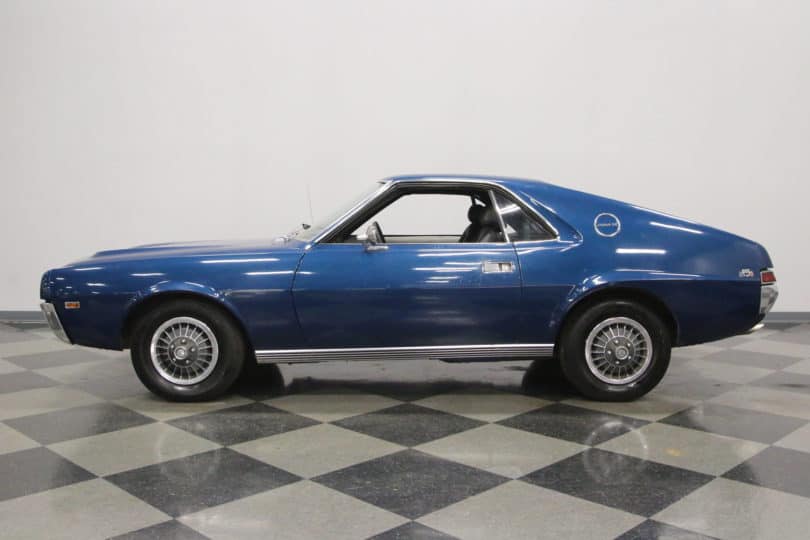
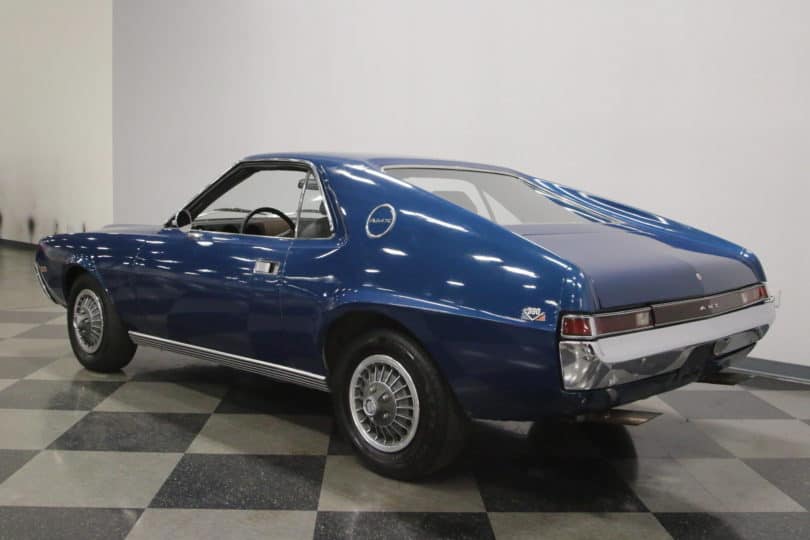
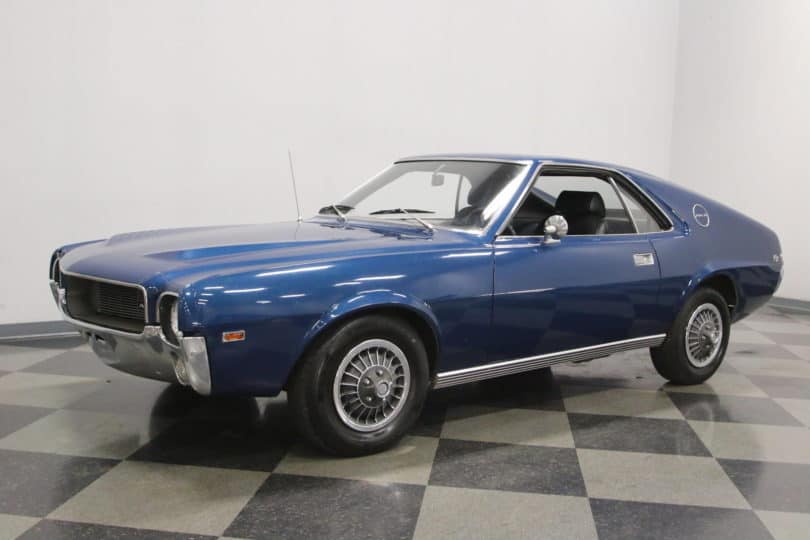
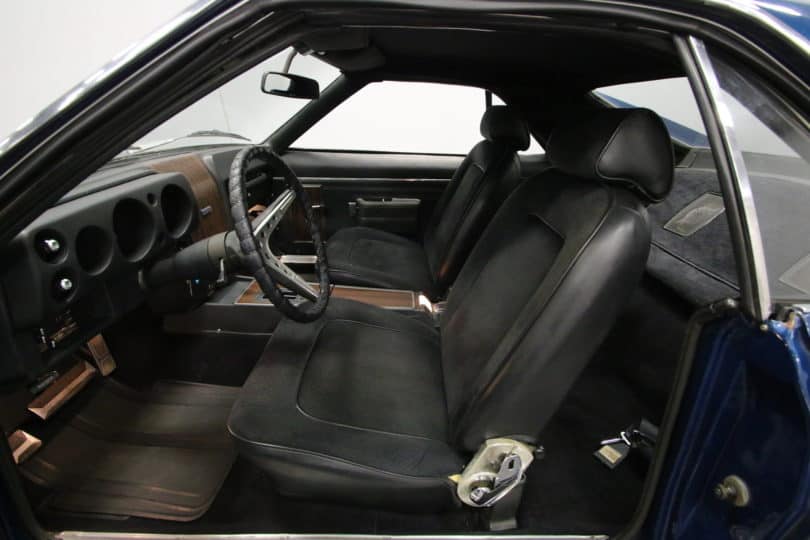
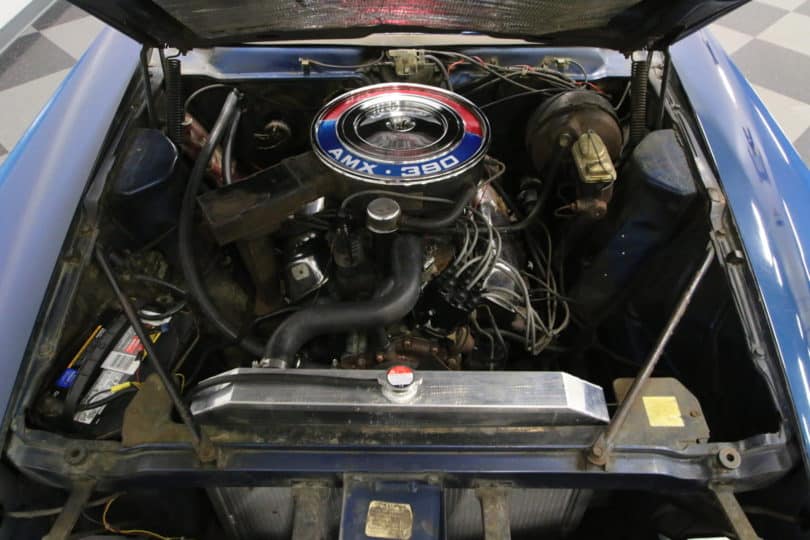
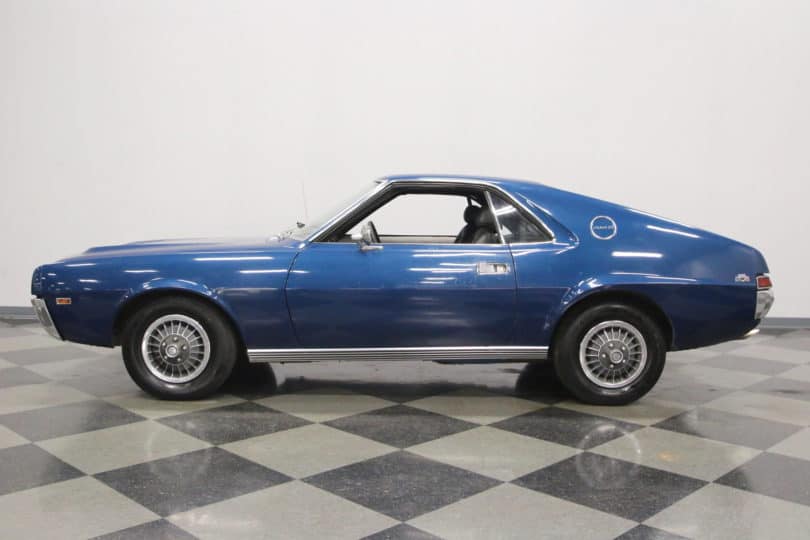
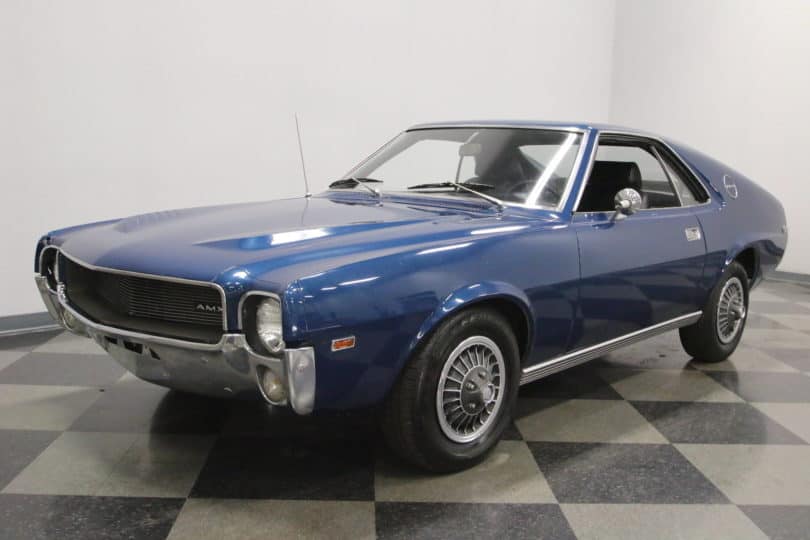
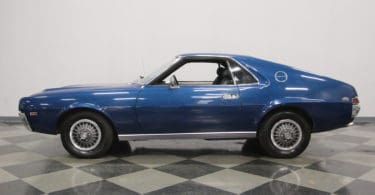
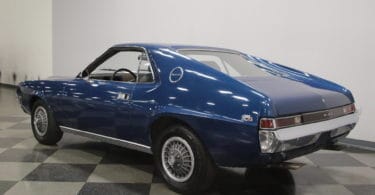
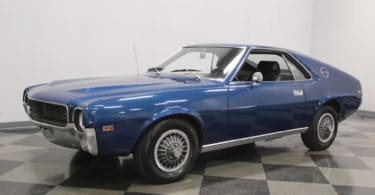
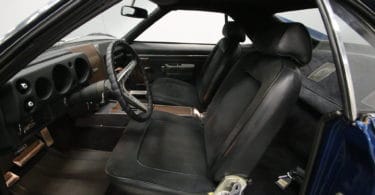
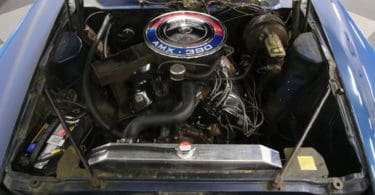
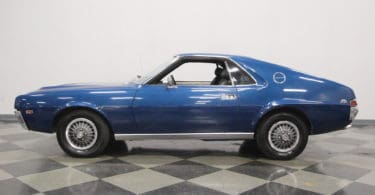
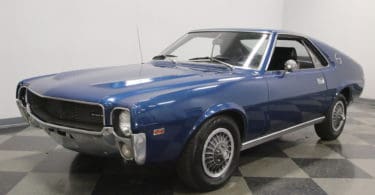
I have a 1968 AMX that I bought new Christmas of 1968 from Star Rambler in Long Branch, New Jersey. The car was originally a 290 cid 4-speed car. (all I could afford at the time) Now a 390 cid car, still four speed, no rust ever, suspension improvements and 52,000 plus miles on the clock. Color factory Caravelle Blue. Still enamored with the styling. These are great cars.
Bought my ’69 AMX 290 automatic (the fewest of the production numbers with only 299 made) in Feb 2020 (I looked at these cars after seeing my first one 25 years ago). All I can say is, I’m damn happy with this car and it’s incredible fun to drive! My wife has a ’73 Javelin AMX because she hates my manual drum brakes. It’s not as much fun to drive as my ’69, however (to me, anyway!). Both always get comments when they are out and about. York County, PA.